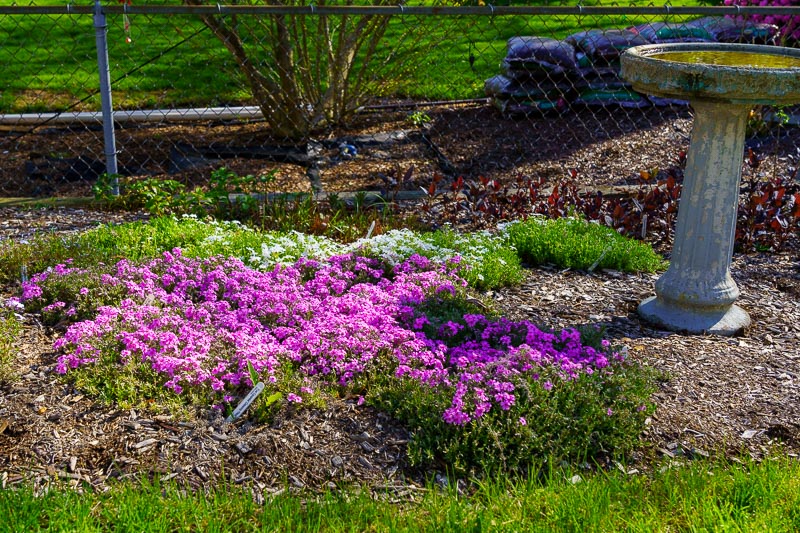'Eye Caramba' Creeping Phlox
Common Name:
Creeping Phlox (‘Running with Scissors’, ‘Eye Caramba’, White, & ‘Oakington Blue Eyes’)
Botanical Name:
Oakington Blue Eyes’
Mature Size:
2” - 7”
Sun Exposure:
Full Sun
Soil Type:
Chalk, sand, loam
Soil pH:
Alkaline, Neutral
Bloom Time:
Mid Spring to early summer, Late spring, Mid Spring to early summer, & Mid Spring to late spring
Flower Color:
(Pink, Purple-pink, White, & Dark Slate-blue)
Care:
Creeping phlox is a fairly low-maintenance plant. It requires watering if you have a week or two without rainfall, along with an annual feeding. Plus, mature plants might need a bit of pruning maintenance to keep them looking tidy unless you'd like for your phlox to naturally spread and blanket a large area.
As with many ground covers, grass and weeds growing up through the phlox can be a nuisance. And they will compete with your phlox for soil nutrients and moisture. It's best to start managing weeds early in the spring before the phlox blooms and its foliage is at its fullest. Hand-pulling is the most effective method for removing weeds. If you let the weeds get out of control, it might be easiest to dig up the phlox (keeping its roots intact), clear the area of grass and weeds, and then replant the phlox.
Soil:
Creeping phlox likes soil that is rich in organic matter. It prefers a slightly acidic soil pH but also can tolerate neutral and slightly alkaline soil. Moreover, it needs a well-drained soil.
Water:
This plant requires a moderate amount of soil moisture, though mature plants do have some drought tolerance. Unless you have rainfall, it will generally need watering weekly, especially during the heat of the summer.
Temperature and Humidity:
Creeping phlox plants are fairly hardy in their growing zones. They tolerate heat well and can handle some frost, though prolonged exposure to temperatures below 40 degrees Fahrenheit can damage the plants. Moreover, humidity is typically not an issue for the plants.
Fertilizer:
Fertilizing in the late winter or early spring will promote growth and support a more robust bloom for your creeping phlox. Feed it with a general slow-release fertilizer suitable for flowering plants, following label instructions.
Pruning:
Pruning is optional on these plants. After the blooming period is over, you can trim back the foliage to create a neater form. This also will promote denser foliage, enhancing the phlox's beauty as a ground cover, and will encourage some fall rebloom. Alternatively, you can skip the pruning and let the plants grow naturally.

